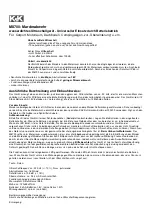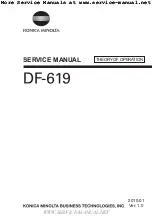
28/132 About this product
Bosch Rexroth AG
, SYEPS series 1X, RE 30201-B/07.2014
Position POP reached – OUT2
This output changes over to High, when the actual position value is within the
position window of the axis’ POP position.
Position PUP reached – OUT3
This output changes over to High, when the position window of the axis’ PUP
position has been reached.
Ready – OUT4
The output signals whether a hardware fault or software error has occurred. Software
errors are, for example, errors that occur in internal processing, communication errors
of the higher-level PLC or a crash of the controller program. A hardware fault is the
failure of internal supply voltages.
When no fault or error has occurred, a High level is present at this output. If a fault
or error occurs, the output is set to Low level and the HNC100 changes over to the
operating mode set in the R parameter “boot mode”. For safety reasons, the operating
mode “tool change” should be selected with the axis function “punching”, and “safety
position” for the axis function “shears”. More details can be found in Chapter 2
“Safety instructions“.
Solenoid A
– OUT5
This output serves for controlling the solenoid on the A-side on the standard variant.
Solenoid B – OUT6
This output serves for controlling the solenoid on the A-side of the standard variant.
OUT7
High variant
: HP accumulator charging
This output is used for activating the accumulator charging valve of the high-end axis.
When the accumulator is being charged, the output changes over to High.
Standard variant
: Status output of “zero point correction”
This output signals whether the zero point of the valve has been corrected. When
the output is “High”, the correction was carried out. The status output is “Low” after
switching on, thus signaling that the zero point error has not been compensated. The
zero point is corrected when operating mode “52” is active.
5.1.3 Functional description
The SYEPS punching systems are configured in different performance classes and
can be switched between different operating modes such as punching/nibbling,
engraving/marking, soft punch and deep drawing. A detailed description can be
found in Chapter 9 “Operation” on page 81.
















































